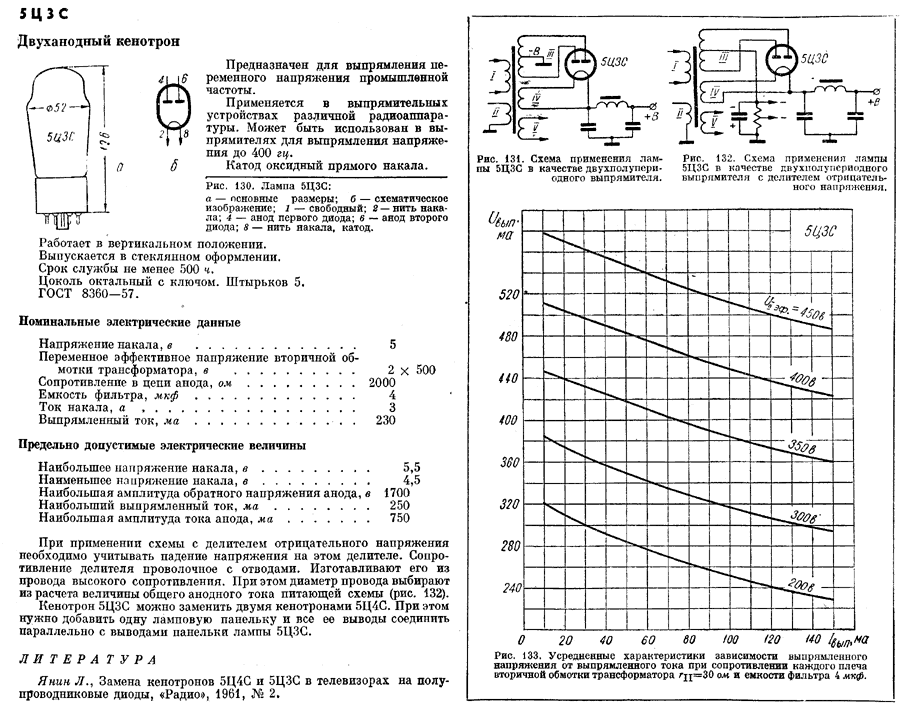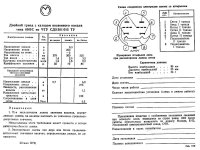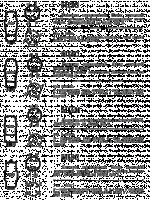Hi gregas,
What kind of meter do you have (make and model)?
You need an oscilloscope, you really do. You will need some way to produce test tones with variable level, and also to measure distortion. Instruments like an HP 339A or 8903A/B will generate and read the output to display the distortion level. OTher similar meters can do the same. Other THD meters require a low distortion oscillator also. Function generators will not work for this task (distortion is too high).
A good digital meter and oscilloscope are your "go to" instruments. They will get a lot of use. You also need a controlled temperature soldering station.
-Chris
What kind of meter do you have (make and model)?
You need an oscilloscope, you really do. You will need some way to produce test tones with variable level, and also to measure distortion. Instruments like an HP 339A or 8903A/B will generate and read the output to display the distortion level. OTher similar meters can do the same. Other THD meters require a low distortion oscillator also. Function generators will not work for this task (distortion is too high).
A good digital meter and oscilloscope are your "go to" instruments. They will get a lot of use. You also need a controlled temperature soldering station.
-Chris
gregas,
CD players have much lower distortion than your amplifier. For years I used a Denon Audio Technical Test CD, and I still do. Other good CDs that have test tones will work well too, if you can not afford a good signal generator.
I do have a function generator, the distortion is about the same amount as many amplifiers. So I only use it for square wave testing (rise time, overshoot, and ringing), and for checking frequency response at any frequency I choose or need.
Even an analog scope can show the shape of a test sine wave, visible distortion, clipping, amplitude of different frequency test tones for frequency response testing; and square wave rise time, overshoot, and ringing.
I have a digital scope that has an FFT. It can show all the above, plus the spectrum. Spectrum shows all the things the analog scope does, plus the quantity of harmonics, intermodulation; and with an impulse test tone shows frequency response of the whole audio frequency band.
Spend your money on a digital scope that has an FFT. Almost all entry level scopes with FFT can be put to good use for testing your amp. If you can not afford such a scope, try to find someone in your area who has one, or at least an analog scope. Inquire on this forum for someone in your area, or a local vacuum tube club, etc.
CD players have much lower distortion than your amplifier. For years I used a Denon Audio Technical Test CD, and I still do. Other good CDs that have test tones will work well too, if you can not afford a good signal generator.
I do have a function generator, the distortion is about the same amount as many amplifiers. So I only use it for square wave testing (rise time, overshoot, and ringing), and for checking frequency response at any frequency I choose or need.
Even an analog scope can show the shape of a test sine wave, visible distortion, clipping, amplitude of different frequency test tones for frequency response testing; and square wave rise time, overshoot, and ringing.
I have a digital scope that has an FFT. It can show all the above, plus the spectrum. Spectrum shows all the things the analog scope does, plus the quantity of harmonics, intermodulation; and with an impulse test tone shows frequency response of the whole audio frequency band.
Spend your money on a digital scope that has an FFT. Almost all entry level scopes with FFT can be put to good use for testing your amp. If you can not afford such a scope, try to find someone in your area who has one, or at least an analog scope. Inquire on this forum for someone in your area, or a local vacuum tube club, etc.
Last edited:
I have a digital multimeter. Should i get something else?
Excellent advice on the scope and other gear.
If you just want to get some basic measurements to see if the amp is 'operating correctly', I'd suggest starting with: Measure voltages in a systematic way and calculate the power dissipation of the output tubes. Use 8 ohm power resistors as dummy loads on the speaker terminals. You can use a very cheap function generator from eBay or some other source to produce some test tones. Or a CD player as suggested. Then you can measure output at the speaker terminals using a 1Hz tone - I think your multimeter should be able to measure AC voltage at 1kHz? Then, a scope.......and.....
Hi 6A3sUMMER,
Buy the best equipment you can afford. Buy it in stages as most of us have to save up the money. The vertical resolution on most 'scopes is only 8 bit. No where close to what is really required. That and an analogue 'scope does not suffer from artifacts (this is where the digital 'scope lies to you).
I have tested equipment for years and am also a journeyman calibration technician. Inexpensive DSOs will not replace an analogue scope yet unless you're up to the above $20,000 mark. I'm using a $20,000 DSO (actually, an Agilent MSO) and I still use the analogue scope a lot. The Philips PM-3070 or 3365 series scopes have bright, sharp traces and represent a great value used. These ones are 100 MHz scopes with the latter having DSO functions, including FFT. That's what I use the HP 35665A and the RTX for. I also have an HP 3585A and HP 4195A for looking at higher frequencies if needed.
So get the right equipment and really enjoy doing this kind of work. I should mention that you can use your computer sound card with some programs - BUT!, you need a front end for it. Something like a THD meter (HP 339A for example), ot Bob Cordell's sound card front end. Most sound cards and inexpensive digital oscilloscopes will be damaged by waveforms exceeding their maximum input of 5 V peak for DC, 5 V p-p for AC signals. A 10X probe will buy you a 50 V peak, unless teh button slips to X1 from X10 (glue the switch with epoxy!!). It is exceedingly easy to encounter 50 VDC peak in today's electronics. Tube amplifiers regularly exceed that limit at most test points.
-Chris
Actually, you couldn't be more wrong about that! Most good technicians have an analogue scope on the bench along with the digital one. I would suggest strongly that the digital scope would be the last thing you should buy. They are useful, but the FFT function isn't useful. Function generators average 1 to 0.5% THD. Useless to measure distortion even on tube amps. I used an HP 339A for years and this equipment has a low distortion oscillator and good THD meter built in together. It offers good value for the money. I also use an HP 35665A and an RTX-6001 (group buy last year) which is excellent. Pricey though, so not something I could recommend unless you are well off.Spend your money on a digital scope that has an FFT. Almost all entry level scopes with FFT can be put to good use for testing your amp.
Buy the best equipment you can afford. Buy it in stages as most of us have to save up the money. The vertical resolution on most 'scopes is only 8 bit. No where close to what is really required. That and an analogue 'scope does not suffer from artifacts (this is where the digital 'scope lies to you).
I have tested equipment for years and am also a journeyman calibration technician. Inexpensive DSOs will not replace an analogue scope yet unless you're up to the above $20,000 mark. I'm using a $20,000 DSO (actually, an Agilent MSO) and I still use the analogue scope a lot. The Philips PM-3070 or 3365 series scopes have bright, sharp traces and represent a great value used. These ones are 100 MHz scopes with the latter having DSO functions, including FFT. That's what I use the HP 35665A and the RTX for. I also have an HP 3585A and HP 4195A for looking at higher frequencies if needed.
So get the right equipment and really enjoy doing this kind of work. I should mention that you can use your computer sound card with some programs - BUT!, you need a front end for it. Something like a THD meter (HP 339A for example), ot Bob Cordell's sound card front end. Most sound cards and inexpensive digital oscilloscopes will be damaged by waveforms exceeding their maximum input of 5 V peak for DC, 5 V p-p for AC signals. A 10X probe will buy you a 50 V peak, unless teh button slips to X1 from X10 (glue the switch with epoxy!!). It is exceedingly easy to encounter 50 VDC peak in today's electronics. Tube amplifiers regularly exceed that limit at most test points.
-Chris
Hey guys thanks for the responses
anatec
my meter is a mtp 2322
Welcome To MTP Instruments
I do not have any scopes or any fancy equipment. I could ask around at work. perhaps someone has some something but i doubt it.
VictoriaGuy
Do you know any cds that generate these tones? I haven't taken any voltage measurements yet. Perhaps i should start there. Where on the circuit board should i measure?
anatec
my meter is a mtp 2322
Welcome To MTP Instruments
I do not have any scopes or any fancy equipment. I could ask around at work. perhaps someone has some something but i doubt it.
VictoriaGuy
Do you know any cds that generate these tones? I haven't taken any voltage measurements yet. Perhaps i should start there. Where on the circuit board should i measure?
VictoriaGuy
Do you know any cds that generate these tones?
I found some 'test' CDs on the web when I looked years ago. You can search for CDs or just mp3 files and then burn the mp3s to CD. There are also ways to generate test tones and save as mp3s.
There are very cheap (I recall under $20 online) function generators available - they probably have too much distortion to be used as sources for distortion measurements (as stated above), but are OK to get an idea of frequency response of an amp. Search ebay for "function generator sine" You'll probably need an adapter cable BNC-clip or BNC-RCA to use the cheap generator.
VictoriaGuy Try a program to test audio devices. Latest News. Audio Rightmark
I haven't taken any voltage measurements yet. Perhaps i should start there. Where on the circuit board should i measure?
Print out the schematic and also the tube pinouts. With that info you can figure out how and where to measure the (DC, usually) voltages on the plates, cathodes and grids of the tubes . (- lead clipped to ground, + lead to test point)
If you search for 'measure plate dissipation' you can find info on how and where to measure on your output tubes.
BE CAREFUL! There are deadly voltages in tube amps, so get expert help or follow good online directions. You may find the videos by 'Uncle Doug' useful; I did.
YouTube
That may work for more skilled users than me. There's NO WAY I'm connecting anything except a 'throwaway' computer to an amp! Perhaps if I built an interface board to protect the computer, I'd consider it.VictoriaGuy Try a program to test audio devices. Latest News. Audio Rightmark
But, I can find cheap test equipment -locally in 'used' listings or at hamfests, or online - so i can use 'the real thing' for the simple measurements I do.
The specs say you can measure AC voltages up to 400 Hz with that meter.my meter is a mtp 2322 Welcome To MTP Instruments
Where are you located, and what's your budget ($$) for test equipment? For example: I sometimes see older analog scopes (working) for very little cost. For a beginner you can learn a lot with an old scope, and some of them are more forgiving of mistakes than newer digital scopes.
Older signal generators that work in the audio range can be found cheaply sometimes.
ok
ill start with the Boyuu a9 schematic. I found this for the el34-b https://pdf-datasheet-datasheet.netdna-ssl.com/pdf-down/E/L/3/EL34-B-Shuguang.pdf
I cant seem to find specs for the 6n9pj tubes or the 5Z3PJ
I'm located in Toronto Canada.
ill start with the Boyuu a9 schematic. I found this for the el34-b https://pdf-datasheet-datasheet.netdna-ssl.com/pdf-down/E/L/3/EL34-B-Shuguang.pdf
I cant seem to find specs for the 6n9pj tubes or the 5Z3PJ
I'm located in Toronto Canada.
I cant seem to find specs for the 6n9pj tubes or the 5Z3PJ
This may help?
6N9P, Tube 6N9P; Rohre 6N9P ID40237, Double Triode
6N9P data sheet
5Z3, Tube 5Z3; Rohre 5Z3 ID3242, Full-Wave Vacuum Rectifier
TDSL Tube data [5Z3]
https://frank.pocnet.net/sheets/127/5/5Z3.pdf
I usually find something useful if I search on the tube letters and 'tube data' or 'tube specs'.
You may want to add that to your 'Profile' info. There are lots of diy-ers in your area. Search for 'Toronto hamfest' and put those on your calendar for the future. I haven't been to a hamfest/swapmeet for a couple of years. The last one I attended (near Nanaimo) I got: HP distortion meter in excellent working condition with manual for $100 2 or 3 signal generators (working) for $5-10 each A couple of excellent analog multimeters for $5 each and a box with about 30 RCA NOS preamp tubes (mostly 12A_7 types) - $1/tube. Well worth the trip. There were some scopes as well, but Icouldn't justify adding another one to my (crowded) bench. Some of the test equipment was in boxes, under tables, etc...most of the stuff 'on display' was radio gear.I'm located in Toronto Canada.
Toronto ads... Something like this would be a start at the right price:
BK Precision 2190B
Oscilloscope Tektronix 2430A
Or online auction (ebay), but watch the shipping (cost, no UPS or FedEx from the USA, etc...)
Last edited:
if you have an old analog oscilloscope, if you don’t have it then $ 100 is not the money for which you need to worry. above, I gave a link to a program that uses a sound card as a generator.
very popular explains the technology of assembly and configuration.
Google Translate
very popular explains the technology of assembly and configuration.
Google Translate
Hey guys, So I've printed out the pin outs for the tubes. I feel like i'm going around in circles. Perhaps because this seems way over my head. I have no clue what to measure and where. For now all i can measure is with my digital multi-meter.
I've noticed people have measured B1 and B2. where exactly is this on the amp? Can i measure B1 on the positive lead of the black capacitor 150uF 400v? How about B2? What else is worth checking?
Greg
I've noticed people have measured B1 and B2. where exactly is this on the amp? Can i measure B1 on the positive lead of the black capacitor 150uF 400v? How about B2? What else is worth checking?
Greg
Greg- There's no substitute for comparing the schematic to your amp to the actual amp wiring, with the amp unplugged and the caps discharged.
With the tube pinout diagrams, you can find the connections to plate, grid, cathode and then follow the wires/components and compare to the schematic. The first time you do this, it will probably take quite a bit of time, going back and forth between schematic and amp. You can put labels inside the amp with marker and/or masking tape.
Usually you will want to have the black lead of your meter connected to the circuit ground of the amp. A clip lead is useful for this - not many meters come with them, so buy yourself some (ebay or electronics store).
Where is the circuit ground of your amp? Find some different spots that are all connected to circuit ground, and pick a convenient place to clip your black lead.
You can usefully spend a few hours going over the circuit with the schematic in hand, before you ever power it up and think about measuring voltages.
To measure the B+ voltage at the 150uF cap, it may not be easy to put the red probe right on the cap terminal. Find another spot that's connected directly to the + cap lead by following the circuit board trace..
You get the idea.....
It will get easier as you do this more and more times. BE SAFETY CONSCIOUS. Remember the old rule: "One hand in your pocket!" This means that you don't want to have two hands inside or near the amp at the same time - you could get a fatal high voltage current going from one hand to the other...via your heart. That's why that clip for the black lead is so useful.
With the tube pinout diagrams, you can find the connections to plate, grid, cathode and then follow the wires/components and compare to the schematic. The first time you do this, it will probably take quite a bit of time, going back and forth between schematic and amp. You can put labels inside the amp with marker and/or masking tape.
Usually you will want to have the black lead of your meter connected to the circuit ground of the amp. A clip lead is useful for this - not many meters come with them, so buy yourself some (ebay or electronics store).
Where is the circuit ground of your amp? Find some different spots that are all connected to circuit ground, and pick a convenient place to clip your black lead.
You can usefully spend a few hours going over the circuit with the schematic in hand, before you ever power it up and think about measuring voltages.
To measure the B+ voltage at the 150uF cap, it may not be easy to put the red probe right on the cap terminal. Find another spot that's connected directly to the + cap lead by following the circuit board trace..
You get the idea.....
It will get easier as you do this more and more times. BE SAFETY CONSCIOUS. Remember the old rule: "One hand in your pocket!" This means that you don't want to have two hands inside or near the amp at the same time - you could get a fatal high voltage current going from one hand to the other...via your heart. That's why that clip for the black lead is so useful.
Back again after a great ski (and other) vacation.

Anyway, next order of business is to build a DIY Capacitor Discharge Device as posted on Carlson's Lab Patreon Account. Got parts ordered - hopefully arrives next week. Will build and test that puppy before heading back inside the guts of my cursed Boyuu A9 and start troubleshooting again. At least I am well rested and have a more open mind now
Tim
Note: oh well, crappy photo support won't allow photo to post in correct orientation (even after editing photo tags) - good start to the New Year eh?

Anyway, next order of business is to build a DIY Capacitor Discharge Device as posted on Carlson's Lab Patreon Account. Got parts ordered - hopefully arrives next week. Will build and test that puppy before heading back inside the guts of my cursed Boyuu A9 and start troubleshooting again. At least I am well rested and have a more open mind now
Tim
Note: oh well, crappy photo support won't allow photo to post in correct orientation (even after editing photo tags) - good start to the New Year eh?
Last edited:
Hi navydiver,
Love your Poodle! We have a Silver Standard and we're getting a rescue today, a "Woodle", a cross between a Soft Coated Wheaten Terrier and a Poodle. It retains the Poodle's personality and smarts, not that the Weaten isn't like that to start with.
Sorry for the OT. Love your dog.
-Chris
Love your Poodle! We have a Silver Standard and we're getting a rescue today, a "Woodle", a cross between a Soft Coated Wheaten Terrier and a Poodle. It retains the Poodle's personality and smarts, not that the Weaten isn't like that to start with.
Sorry for the OT. Love your dog.
-Chris
- Home
- Amplifiers
- Tubes / Valves
- Boyuu EL34 A9 Tube Amp


